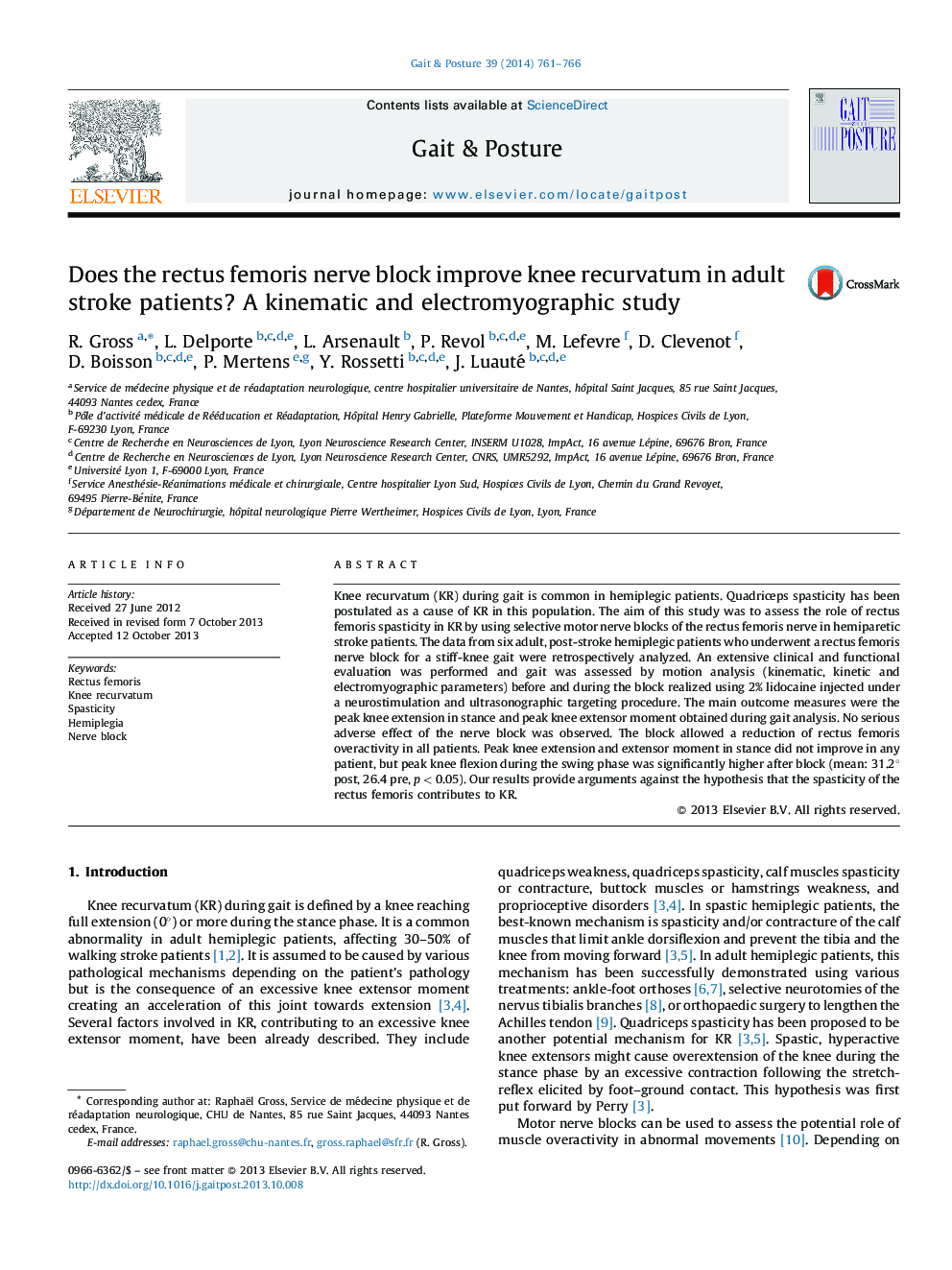| کد مقاله | کد نشریه | سال انتشار | مقاله انگلیسی | نسخه تمام متن |
|---|---|---|---|---|
| 6206394 | 1265646 | 2014 | 6 صفحه PDF | دانلود رایگان |

- We retrospectively investigated the effects of rectus femoris nerve blocks on knee recurvatum in post-stroke hemiplegic patients.
- A clinical assessment and 3D gait analysis were performed to evaluate the effects of the nerve blocks.
- Blocks were performed using a double-location technique: electrical stimulation and ultrasonography.
- Our negative results argue against treating spasticity of the rectus femoris to control recurvatum in this population.
Knee recurvatum (KR) during gait is common in hemiplegic patients. Quadriceps spasticity has been postulated as a cause of KR in this population. The aim of this study was to assess the role of rectus femoris spasticity in KR by using selective motor nerve blocks of the rectus femoris nerve in hemiparetic stroke patients. The data from six adult, post-stroke hemiplegic patients who underwent a rectus femoris nerve block for a stiff-knee gait were retrospectively analyzed. An extensive clinical and functional evaluation was performed and gait was assessed by motion analysis (kinematic, kinetic and electromyographic parameters) before and during the block realized using 2% lidocaine injected under a neurostimulation and ultrasonographic targeting procedure. The main outcome measures were the peak knee extension in stance and peak knee extensor moment obtained during gait analysis. No serious adverse effect of the nerve block was observed. The block allowed a reduction of rectus femoris overactivity in all patients. Peak knee extension and extensor moment in stance did not improve in any patient, but peak knee flexion during the swing phase was significantly higher after block (mean: 31.2° post, 26.4 pre, p < 0.05). Our results provide arguments against the hypothesis that the spasticity of the rectus femoris contributes to KR.
Journal: Gait & Posture - Volume 39, Issue 2, February 2014, Pages 761-766